Service: Mechanical Engineering
eBay Canada
Heritage Building Office Renovation
There were several interesting engineering challenges in designing building systems for these downtown Toronto heritage buildings and connecting corridor bridge.
The first challenge was the heritage designation, which limited what changes could be made without municipal approval. In addition, the building interior is all wood, and it was important to maintain the character of the site. Plus, in order to make the low-height floors look as large as possible, all existing mechanical ductwork had been removed.
The interior design called for open ceilings, so the appearance of the ductwork had to suit the design concept. The first order of business was to establish at what height and location the ductwork could be installed. Adding to the constraints, the ducts needed to be located over the workstations, close to the support columns, and the main corridors kept free.
Another challenge facing the team was fresh air, or rather the lack of it. The floor density of 116 ft2 per person, 242 workstations, 17 meeting rooms, plus a large gathering room and a shopping showcase room pushed the existing building fresh air over its limits. To solve this, an additional fresh air make-up air system had to be installed. Because no additional shafts were possible, we located a courtyard next to the connecting bridge and ran ductwork over the roof and down the back of the building, almost out of sight.
The existing electrical supply consisted of two 200 amp panels at 600 volts, with no power upgrade possible. Our team worked the electrical design to balance the loads and “make the system work”, taking into account the new roof fresh air unit and additional AC systems required for LAN and conference rooms. All of these added to the existing electrical load. A basket tray system at high level looping the furniture was used for wiring and cabling. Our fire protection specialists ensured code compliance for all hoses and sprinklers. They also designed the plumbing, which brought its own challenges as the landlord had stipulated no visible piping.
SERVICES
Mechanical Engineering | Electrical Engineering | Lighting Design | Fire Protection
PROJECT FEATURES
Size: 31,300 ft2 | Status: 2014
LOCATION
Toronto, Ontario
KEY SCOPE ELEMENTS
Work completed within heritage designation | Electrical load balancing to meet additional power load without possibility of power upgrade | Code compliance for all fire protection systems | Landlord restrictions met regarding plumbing and HVAC design


— Images courtesy of Sirlin Giller & Malek Architects
Humber College
Student Welcome & Resource Centre
The Student Welcome and Resource Centre at Humber College provides a high-visibility landmark gateway to the campus, and a highly accessible focal gathering place for students and the public.
The campus gateway is a standalone facility at Colonel Samuel Smith Park, an historic agricultural parkland on the shores of Lake Ontario.
As the mechanical and electrical engineering consultant on the Planning, Design and Compliance (PDC) team, HH Angus contributed to the development of a detailed space program, room layouts and adjacencies, including space data sheets.
Our project scope included developing the design brief and schematic plans for a comprehensive PSOS (Project Specific Output Specifications). The PDC team reviewed all design submissions to ensure full compliance with the original schematic design and PSOS.
The PDC team submitted all necessary planning documents to facilitate development. This included completion of massing and setback drawings to support discussions with city planning to obtain feedback to inform the RFP. The team also attended public meetings and open houses to represent Humber’s interests and answer design-related questions.
SERVICES
Mechanical Engineering | Electrical Engineering | PDC team
PROJECT FEATURES
Size: 43,500 ft2 | Status: Completed 2017
LOCATION
Toronto, Ontario
KEY SCOPE ELEMENTS
Detailed space program, room layouts and adjacencies, including space data sheets | Design brief and schematic plan for comprehensive PSOS | Sustainable design strategies included green roof and large areas of landscaping | Certified LEED silver

Engineering for occupant comfort
Certified LEED Silver, the four-story structure houses 43,500 ft2 of space for student services, cultural facilities, and wellness programs.
Working with nature
Sustainable design strategies included a green roof and large areas of landscaping. Full-height glazing on the east and north elevations maximize daylight harvesting while metal sunscreens and shade trees reduce solar gain in summer.

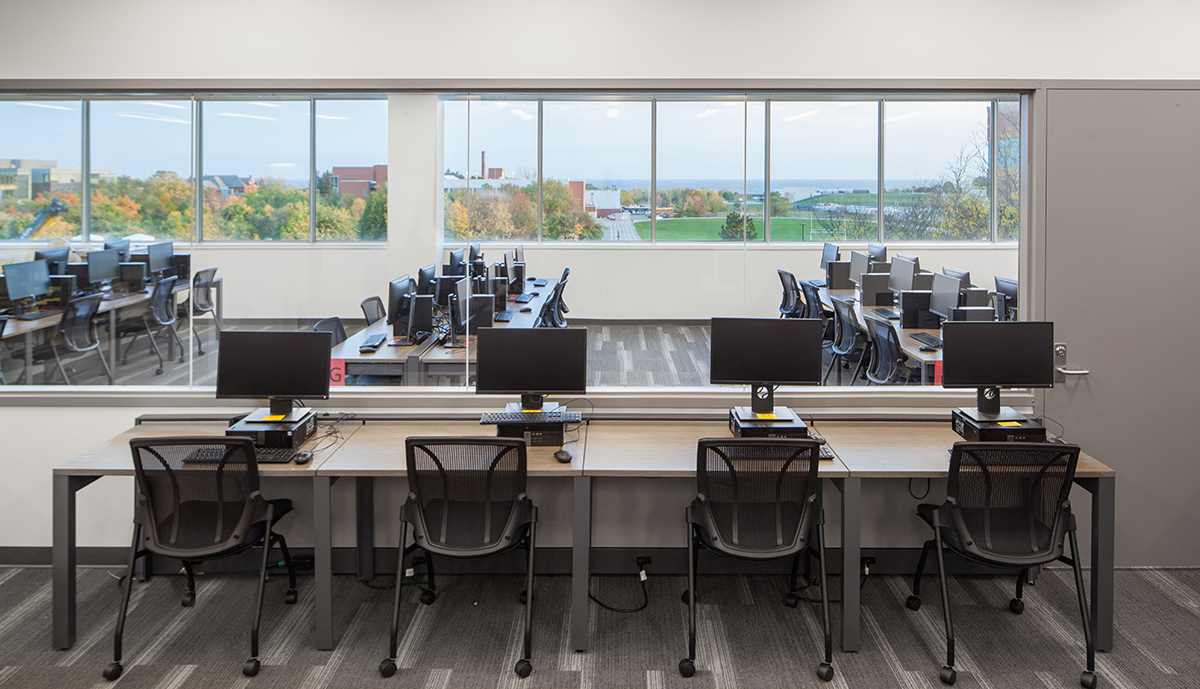
Mount Sinai Hospital
Lobby, Art Gallery, Security Renovations
Mount Sinai Hospital is world renowned as a research facility and acute care health sciences centre with numerous clinical strengths, including women’s and infants’ health, chronic disease management, specialized cancer care, emergency medicine, and geriatrics.
HH Angus’ scope of work for this renovation project included two new entrances, exterior pathway lighting, a showcase art gallery/healing centre, food court, security desk and waiting area. The work also incorporated part of the level above the main lobby.
The mechanical scope included a dedicated Air Handling Unit for the kitchen, an ecology unit with roof-mounted exhaust to serve kitchen hoods in the food court concessions, as well as the complete renovation of the HVAC, fire protection, and plumbing systems for the renovated area. This included mechanical services for concessions and the provision of DDC controls.
Our electrical scope included reworking the fire alarm and security system, new electrical infrastructure, and new custom lighting. A lighting control system was designed to manage lighting in a variety of spaces, including the new art gallery/healing centre, waiting area, food court, exterior pathways, and synagogue. Design for the two new main entrances provided power for revolving doors, along with custom interior and exterior lighting.
Several design changes were required during construction to satisfy owner-driven revisions. User meetings were held to confirm that the scope of work was clear before final drawings were submitted. We also provided review sets and cut sheets to ensure the design met the unique requirements of the end users.
SERVICES
Mechanical Engineering | Electrical Engineering | IT/Communications Design | Lighting Design
PROJECT FEATURES
Size: 34,000 ft2 | Status: Completed 2016
LOCATION
Toronto, Ontario
KEY SCOPE ELEMENTS
Main lobby renovation & new healing centre/art gallery | Lighting designed to accentuate gallery artwork | Complete renovation of HVAC, fire protection and plumbing systems |New electrical infrastructure and lighting control system

Continous operations
The project had to be executed in multiple phases because the Hospital’s main floor could not be closed to visitors and patients. HH Angus responded by providing close coordination with the prime consultant, the hospital and contractors on site in order to ensure smooth project delivery.
Listening to stakeholders
An interesting challenge for the lighting design team was the need for the custom lighting and controls package to incorporate the design requirements from the curator of the new art gallery, as well as from the Rabbi of the Hospital’s synagogue.
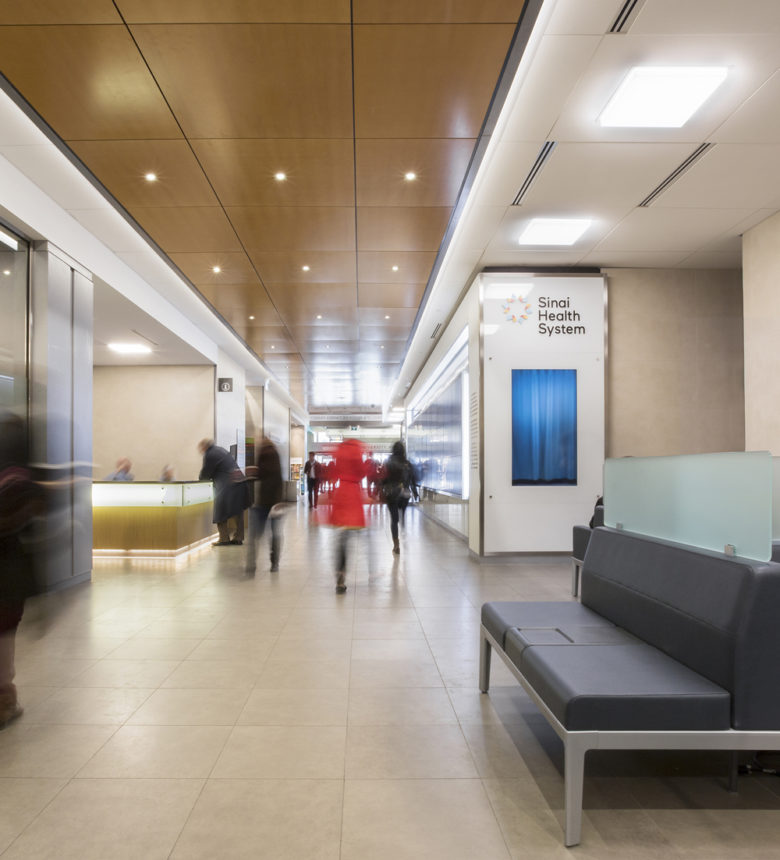
Public Health Ontario Laboratories
MaRS Discovery District
“Every day, the entrepreneurs and innovators at MaRS work on ideas that will save lives, invent whole new industries and create jobs we can’t even imagine today.”
— Glen Murray, then-Minister of Research and Innovation
The MaRS* Discovery District combines a variety of companies, research disciplines and professional services, specifically promoting cross-institutional collaboration. The complex comprises approximately 1.5 million ft2.
HH Angus was engaged by Public Health Ontario to engineer its space in the MaRS Phase II building, in order to provide a new public health laboratory in Toronto. The project was a leasehold improvement of approximately 160,000 ft2 on the top four floors of the MaRS Phase II Tower in Toronto.
The project scope included CL-2 and CL-3 laboratories and associated support systems, as well as related office, administrative and support space.
The CL-2 and CL-3 labs were designed, constructed, commissioned and certified in accordance with the Health Canada Laboratory Biosafety Guidelines, as well as other authorities having jurisdiction. Merrick and Company was involved in the CL-3 architecture and engineering design.
SERVICES
Mechanical Engineering | Electrical Engineering | Vertical Transportation Design | Lighting Design | Communications & Security
PROJECT FEATURES
Size: 160,000 ft2 | Status: Completed 2014
LOCATION
Toronto, Ontario
KEY SCOPE ELEMENTS
Implemented new laboratory design | CL-2 and CL-3 labs | Associated support systems and office space
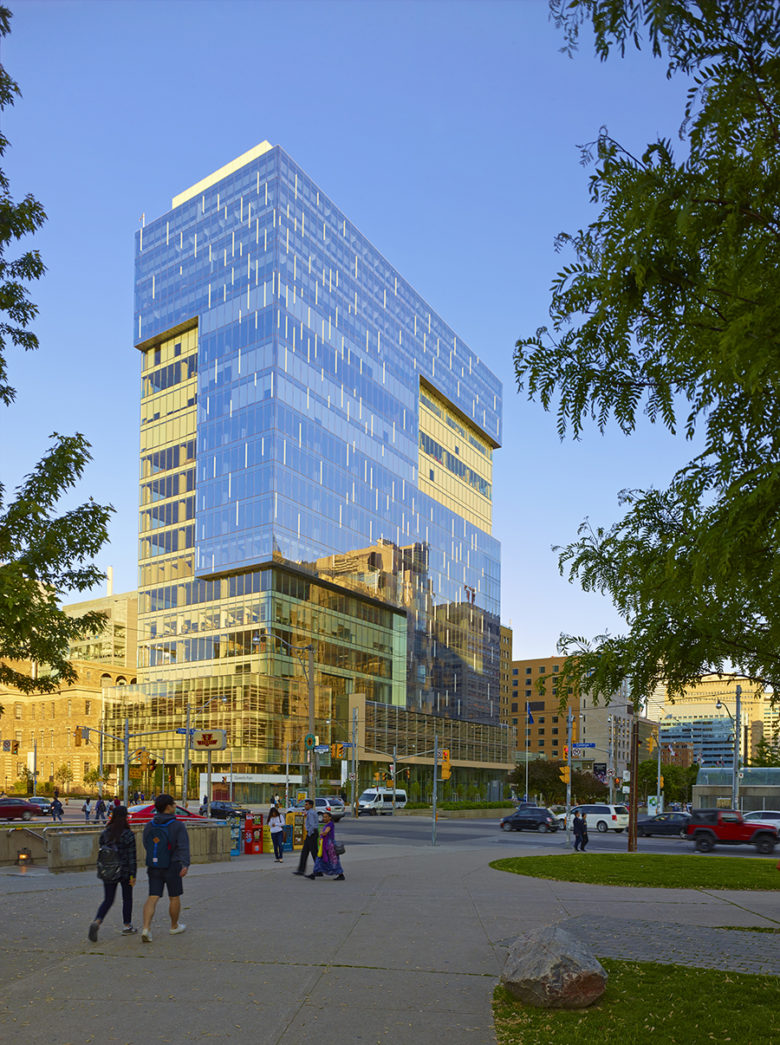
Safer spaces, lower costs
HH Angus negotiated with the City of Toronto for low level exhaust and supply. Instead of 1cfm/ft2, we implemented .75cfm/ft2. This resulted in the delivery of a safer site at less cost, as well as lower operating costs.
Density equals design complexity
This project was a complicated fitout, due to the high density of scientific equipment and associated requirements for mechanical and electrical infrastructure; for example, the large number of fume hoods on site.
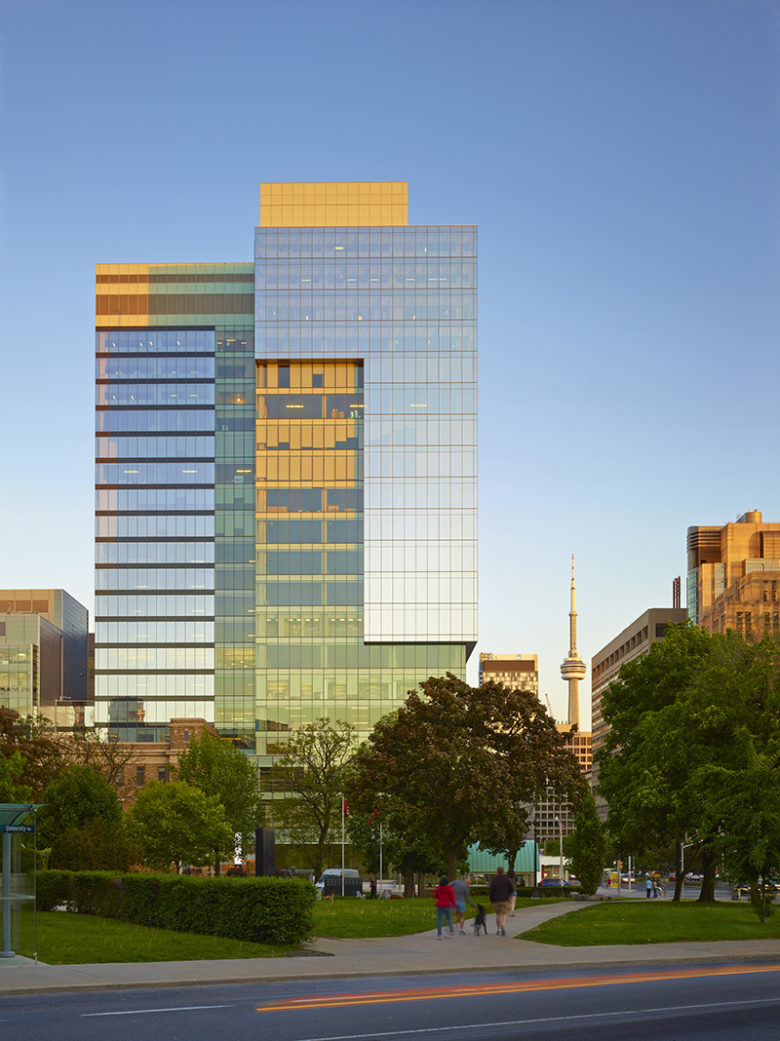
*MaRS refers to Medical and Related Sciences, the original mandate for the operation. When the founders wanted to further the commercial potential of research and science investment, the acronym came to represent the P3 development as a whole.
Quote source: MaRS Centre Phase 2 Set for Completion in Fall 2013
Toronto Athletic Club
Stratus Restaurant
HH Angus’ lighting design for Stratus Restaurant was honoured with an IES North America Illumination Design Award of Merit, as well as an award from The Society of British Interior Designers in their Restaurant and Bar category.
Located 36 stories above the streets of downtown Toronto, Stratus Restaurant has a reputation for providing guests with both outstanding cuisine and flawless service, together with impressive views of the downtown, harbour and Toronto Islands. HH Angus was engaged to provide lighting design, with accompanying electrical and mechanical engineering for an interior design refresh of this popular 10 plus-year old dining establishment.
The entrance to Stratus is in a high-rise commercial tower at the TD Centre. Ceiling light sources consist of LED coin lights to simulate a starry night, with LED downlights hidden in the wood slat ceiling over the lounge and bar areas. LED cove lighting was used at the far end of the lounge and under the reception pedestal. In-ground LED lights uplight wood slats to enhance the décor and coloured glass panels within slats. All lights are zoned and DMX controls allow for independent dimming to enhance the mood. The colour temperature is 3500K for all sources, to enhance the variety of colour palettes.
The bar area and bottled wine storage were backlit with LED panels in the client’s corporate colour. The bar was highlighted with an LED side-emitting ribbon light. All areas were zoned and can be dimmed independently, and lighting controls were configured to allow master control when doors are open and slave controls when door are closed. The restaurant lighting design achieved 1W/ft2, surpassing ASHRAE requirements of 1.4 W/ft2, and was delivered within budget.
SERVICES
Lighting Design | Mechanical Engineering | Electrical Engineering
PROJECT FEATURES
Status: Completed 2015
LOCATION
Toronto, Ontario
KEY SCOPE ELEMENTS
Lighting design | All areas zoned and can be dimmed independently | LED cove lighting, inground LED uplights | Lighting controls configured to allow both master control and slave control | Achieved 1W/ft2, surpassing ASHRAE requirements of 1.4 W/ft2
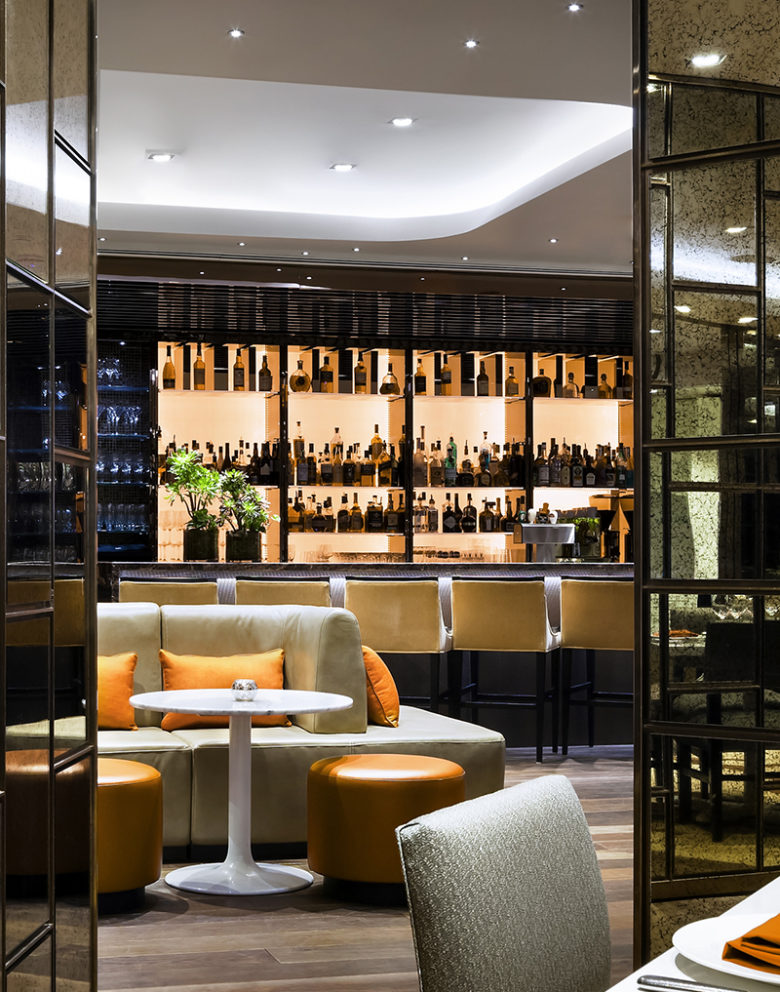
Enhancing the ambiance
The lighting system zoning was balanced for both daytime and nighttime use, to provide customers with a warm and intimate dining experience.
